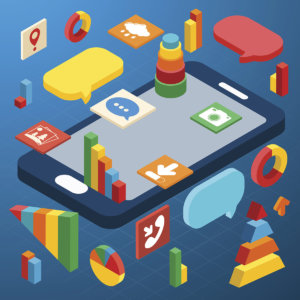If You Think Big Data’s Challenges Are Tough Now…
…you should recognize that it’s only going to get tougher as data from sensors and smart devices becomes more prevalent.
Topics
Competing With Data & Analytics
According to the EMC/IDC Digital Universe Report, data is doubling in size every two years. From 2013 to 2020, the digital universe is projected to grow from 4.4 trillion gigabytes to 44 trillion gigabytes.
For executives faced with the age-old challenge of how to organize and learn from the data available to them, the problem just got a lot harder.
The Internet of Things (IoT) may be a new topic to many executives, but it lies at the heart of the phenomenon of data proliferation. Today, according to the EMC/IDG study, consumers and workers generate two-thirds of all new data. This is about to change. It is projected that within this decade, most new data will be generated not by people — consumers and workers — but by sensors and embedded, intelligent devices connected to the Internet — smart phones, traffic lights, MRI scanners, smart energy grids, and heavy industrial systems.
While still small as a percentage of all data that is generated, it is expected that data generated by “things” will grow from 2% of all data that is captured in 2013 to 10% in 2020, with this pace accelerating during the next decade.
This warrants the attention of any executive charged with an organization’s data strategy. As connectivity becomes pervasive, proper management of intelligent devices will provide the foundation for organizational adaptation to rapidly changing needs. Health care providers are employing sensors to monitor patients in real time, enabling physicians to more effectively diagnose disease and prescribe treatments. Financial services firms are able to monitor and manage risk and detect fraud. General Electric has invested heavily in manufacturing sensor-equipped devices that stream data across what it calls the “Industrial Internet.” All of these benefits result from the situational awareness enabled by intelligent devices, sensors, and the monitoring and capture of real-time data for analysis and action.
Find Value in Fresh Data
To date, the Big Data challenge for most executives has been about organizing and managing large volumes and greater varieties of historical data, mostly for purposes of improving their analytic capabilities — understanding past behaviors and activity as a predictor of future actions.

